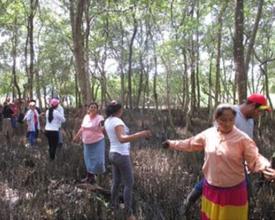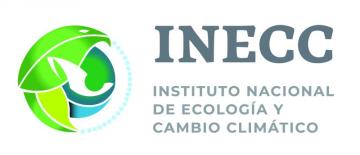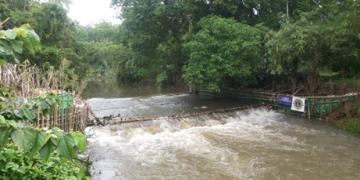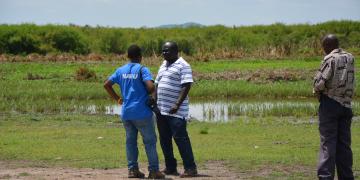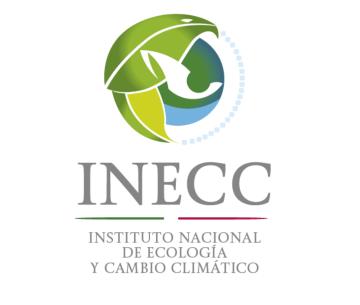
Strengthening capacities and reducing risks to stimulate a process of long term adaptation
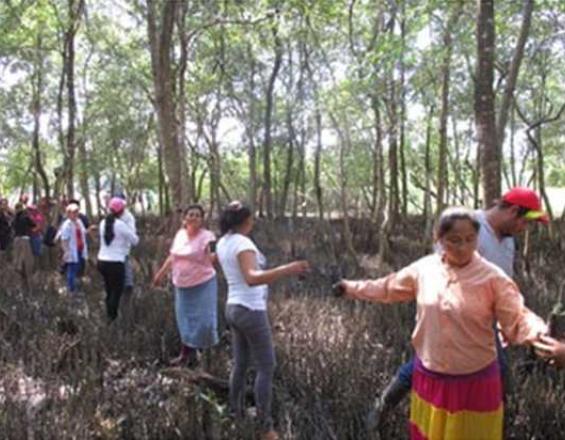
The National Institute of Ecology and Climate Change (INECC) has put in place a participatory, inclusive process of creating awareness about socio-enviornmental problems as well as strengthening capacities and reducing vulnerabilities (e.g. damaged property during floodings, water-born diseases, loss of ecosystem services) in three communities of the Carmen-Pajonal- Machona Lagoon System (SLCPM, using its Spanish acronym). Thereby, the institute has managed to establish the foundations for a local process of long-term adaptation. This process includes the development of a social enterprise offering rainwater capture and water purification; community-led reforestation activities; and the construction of infrastructure (“palafitos” - houses on stilts) designed to reduce risks to property in time of flooding.
Context
Challenges addressed
- Hurricanes and storms not only spread pollution emanating from agro-industrial and petroleum industries, they cause salinization of soils and freshwater, and reduction in fish stocks;
- Social fabric has been damaged due to political and / or religious differences;
- There is no organization, private or public, that works continuously in supporting the communities;
- The zone is remote and insecure.
Location
Process
Summary of the process
Building block one, incentivizing communities´participation, focused on attracting people´s attention and raising their awareness, which were both essential to engage them in the activities of building blocks two (mangrove reforestation), three (women as agents of change) and four (risk management). Building block three provided a space for women to share their particular needs and vulnerabilities. It also strengthened their self-image which, in turn, led to a stronger participation in the activities of the other building blocks. Building block five consists of various forms of institutional and organizational support all along the first four building blocks and their on the ground activities.
Building Blocks
Incentivising community´s participation as a motor of transformation
INECC recognises that adaptation should be “with the people, for the people”. It has been vital to incentivise community participation within the zone in order to achieve any action aimed at restoring, managing and conserving local mangroves. With the support of local organizations, INECC has created, for local communities, spaces for social learning, interaction and communication. These spaces have facilitated the dissemination of information about the important role of ecosystems in local livelihoods; awareness raising about threats to the socio-ecological systems in which the communities thrive; and capacity development on how to manage resources sustainably as well as how to commercialise ecosystem services. The constant and consistent work of local organizations with communities has created a sense of belonging towards their ecosystem and a responsibility for the decisions and actions for its care.
Enabling factors
- A well developed community vision, from the very start, of what climate change means for their livelihoods and ecosystem in which they live, and about the daily problems they face
- Committed and consistent support from experienced, local NGOs
- Credible institutions
- Confidence of the communities in themselves and in the NGOs
Lesson learned
- It is vital to listen to the community, as well as to give them the opportunities to speak up and participate in the long term.
- Community members have to maintain high levels of commitment to the project when it moves from diagnostics to concrete action on the ground.
- This commitment will be stimulated by external recogition of their activities.
Mangrove reforestation financed by the project, supported by the community
Making the most of project funds, INECC, together with local NGOs, have initiated activities for the reforestation and maintenance of mangroves. The strategy involved working with the communities to further develop awareness on the significance of a healthy mangrove for their livelihoods. In addition, workshops with children, women and men were organized to provide them with a voice in decision making regarding the mangrove activities. In this way, the community members took on ownership of these activities, seeing them as a benefit for their productive activities as well as for the general wellbeing of their families. In the end, it were the community members who decided where to reforest and with what local species. Despite the reforestation not succeeding due to technical, seasonal and administrative issues that meant that the a large part of seedlings did not survive, the community activity was key in generating confidence in INECC. This stimulated the social capital to support other social processes, intended in the wider project, such as the building of "palafitos", the rainwater capture system, etc.
Enabling factors
- Human as well as economic resources, in order to facilitate the employment of local communities in the reforestation activites.
- Committed and consistent support from experienced, local NGOs
- Community members who maintain high levels of commitment to the project when it moves form diagnostics to concrete action on the ground
- The workshops that aimed at creating community reflection about the reforestation activities created a sense of responsibility for the activities being undertaken.
Lesson learned
- It is worth considering employing “chinampas” techniques (monticules of mud serving as support for the seedlings) for reforesting lowlying mangrove swamps.
- It is vitally important, for seasonal activities such as mangrove planting, to make sure that funding is put in place at the time it is needed, i.e. the time the seedlings will prosper best.
- Community participation should be complemented by scientific knowledge about how, what and when to plant particular species.
- Multiple funding networks are needed to ensure that funding is available at the time it is needed in order to provide project continuity, and to not lose community momentum.
Positioning women´s groups as agents of change
The adoption of a gender equality focus in the project provided an opportunity to take into account the perceptions and concerns of women. In women-only workshops, their social vulnerability in the form of family violence, crime and drug addiction, was recognised. Moreover, the workshops made evident their desire to participate in project activities that would mean an improvement in the quality of life for their families. Their resulting participation was manifold. For example, in order to secure access to potable water, the women´s group from the community of Las Coloradas got capacitated in the technology needed for the operation of rainwater capture systems as well as water purification equipment. Additionally, the women created the social enterprise “Drops of Love” by which they could provide potable water to the primary school and nursery, whilst selling the remaining water to families in the community.
By way of a further example, after women from the community of El Mingo got themselves capacitated in construction and eco-tech, they formed the group “The Breeze of El Mingo” so that they could take part in the construction of palafitos to protect, in times of disaster, goods and property belonging to the 80 families in the community.
Enabling factors
- Being able to identify from the beginning of the project the needs, vulnerabilities and capacities of local women, and thereby integrating them well into the adaptation measures design
- Workshops for reflection about adaptation measures that promoted the continued commitment of women to participate in the project
- A growing spirit of pride and entrepreneurship on the part of the women of the communties
- Committed and consistent support from experienced, local NGOs
Lesson learned
- Capacitated and adaptation-aware women are a source of enthusiasm, motivation and drive for the effective implementation of projects that support improvements in family life;
- Empowerment of women cannot happen just through their participation in workshops; their continuous mentoring, by local facilitators, in the medium to long-term is vital for the sustainability of projects;
- Participation of women in the project stimulated their active participation in activities beyond the project;
- In communities where there is a deep divide between activities undertaken by men and women, treating gender equality as a matter of identifying women´s projects, alone, can lead to the risk that important productive issues to do with community livelihoods may be missed in measures implemented. A gender responsive approach to community adaptation planning that considers adaptation measures from both male and female perspectives is an effective approach for ensuring that both women´s and men´s activities are supported through adaptation.
Collective initiatives for disaster risk reduction
The reduction of vulnerabilities and the strengthening of adaptive capacities in the SLCPM also involved strengthening the communities’ collective management and reduction of disaster risks, from illnesses to flooding. For example, faced with faltering access to potable water, and the consequent risks of skin and gastro-intestinal diseases, community investments in infrastructure and health were made. These included a) the installation of rainwater capture systems as well as water purification and bottling equipment; the creation of a community social enterprise “Drops of Love” (“Gotitas de Amor”) through which potable water is produced and provided to the primary school and nursery, and sold on to increase potable water supply to families in the community.
In addition, flood risks to property and belongings were managed and reduced through a collective initiative that included not only the construction of palofitos (roofed platforms on stilts) but also the creation of emergency plans and their promotion through the establishment of a civil protection committee.
Enabling factors
- Sufficient financial resources to be able to make per-diem payments to community members as an incentive to work on the different implementation activities of the project;
- Capacity to be able to provide evidence to communities that actions identified in workshops are being implemented;
- Availability of land of sufficient size, as well as strategic position, and preferably in community ownership, for the construction of palafitos that can act as refuges for community goods;
- Enthusiasm for active participation in implementation of project activities.
Lesson learned
- The construction of the elevated houses (“Palafitos”) can be an effective strategy for managing and reducing flood risks; however, it requires the continued commitment of the community to maintain and equitably use these installations for the benefit of all;
- It is important to keep in mind that climate change does not just present direct risks for communities and their ecosystems; it also can exacerbate existing structural problems in the socio-ecological systems in which they live. Reduction of risk in the face of flooding, for example, should also include measures for mitigating such problems, such as systemic water pollution derived from ranching, petroleum and sugar cane activities, which makes property damage from flooding much worse;
- It is important to have concrete plans for upscaling demonstration projects, such as the construction of Palafitos;
Constructing strategic multi-level and multi-actor alliances
INECC established a multi-actor alliance with public as well as private institutions at different governance levels, from federal to local. It was this alliance that could facilitate the effective functioning of the four other building blocks of this solution, especially through institutional support for capacity development and follow-up from experienced organizations.
Examples of this capacity development from alliance members include:
- Literacy support for the communities – the National Institute for Adult Education (INEA), Tabasco
- Donation of cement and bottles – Arji College, Tabasco
- Construction of raised kitchen gardens for schools and palafitos – Centro de Información y Comunicación Ambiental de América del Norte (CICEANA)
- Preparation of didactic materials – Centro de Educación y Capacitación para el Desarrollo Sustentable (CECADESU)
- Design of risk maps and zonal plans focused on climate change - Universities and authorities of Tabasco
Enabling factors
- Open-minded government authorities;
- Sufficient resources to enable a continuation of capacity development activities up to the point at which the community is self-organizing
Lesson learned
It is necessary to prepare a strategy of alliance coordination and clear communication so that both alliance members and community members can understand the role of different members of the alliance that visit their zone, and know what to expect from them, as well as how to collaborate with them.
Impacts
Local communities have benefited from mentoring for almost 3 years, provided by NGOs and the local government under the auspices of INECC. This has developed capacities in the following areas:
- improved abilities to identify threats, the latter´s origins and solutions;
- organizational capacity to support the reduction of risks, such as from diseases related to the consumption of contaminated water, as well as from flooding;
- Technical capacities related to the establishment of various eco-technologies such as rainwater capture systems; plant nurseries; and mangrove reforestation.
Women´s groups have benefited particularly from having increased their self-confidence which has allowed them to create governance systems that have strengthened social cohesion in the area. The groups have also initiated changes that require a high level of organization such as the opening of new pathways for the commercialization of ecosystem services for social benefit.
Beneficiaries
200 people have received project per diems in return for work on adaptation activities; women´s groups have won recognition from their communities. Almost 800 people and a local school have benefited from rainwater capture and purification system.
Sustainable Development Goals
Story
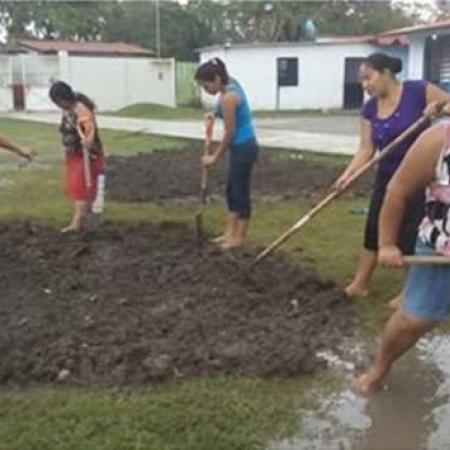
The Carmen-Pajonal- Machona Lagoon System in Tabasco, Mexico, is a highly productive zone which has been adversely affected by infrastructure works that have led to salinization of water bodies and soil. It has also been affected by pollution derived from the petroleum industry, the sugar industry and by agriculture. When climate change-related threats such as hurricanes and tropical storms strike the region, ecosystems as well as communities face cascading risks: Flooding affects infrastructure and contributes to the sedimentation of water bodies. It also spreads any pollution that may be contained in the rivers, adversely affecting the health of humans, animals and plants. In the SLCPM, water is the key issue, be it lack of supply and quality for local communities or in terms of recurrent floods.
The project began with a participatory strategy aimed at reducing vulnerabilities and strengthening capacities of three communities. A key action was to involve the communities at an early stage in the problem definition and in the selection of both measures and key intervention sites. A first mechanism for initiating social organization was through community reforestation activities, which although of limited success, served to stimulate the involvement of people in the later activities of the project. For example through rainwater capture and a water purification plant in the community of Las Coloradas; the construction of “palafitos” (raised, roofed platforms on stilts) in the community El Mingo as refuge platforms in the face of flooding as well as spaces for experimentation for eco-technologies. In both cases, it was women who were most involved in developing their capacities in terms of technology, organization and administration. They were also the ones most likely to provide continuity for the project activities.
The rainwater capture and purification system benefited almost 800 people, providing free water of quality to pupils at a local primary school. This helped in turn to reduce the incidence of gastro-intestinal illnesses amongst the children. The construction of "palafitos" led by the women´s group “Las Brisas” recently capacitated in construction techniques, awoke the interest of other communities to establish their own "palafitos" as a means of reducing the risks to property in the face of flooding.
Additional support on the part of INECC also included the monitoring and evaluation of the implemented adaptation actions.
